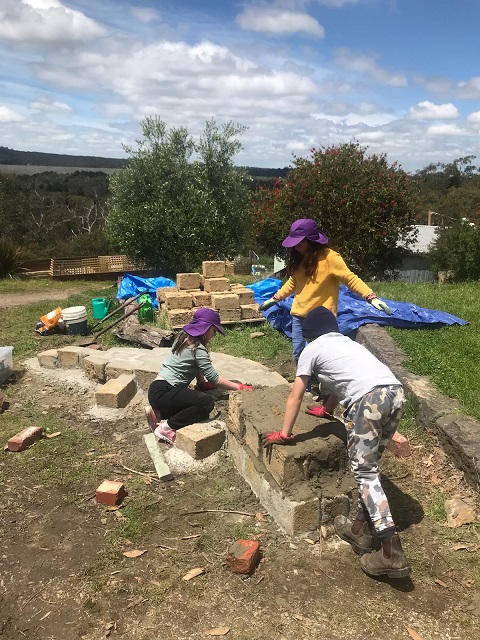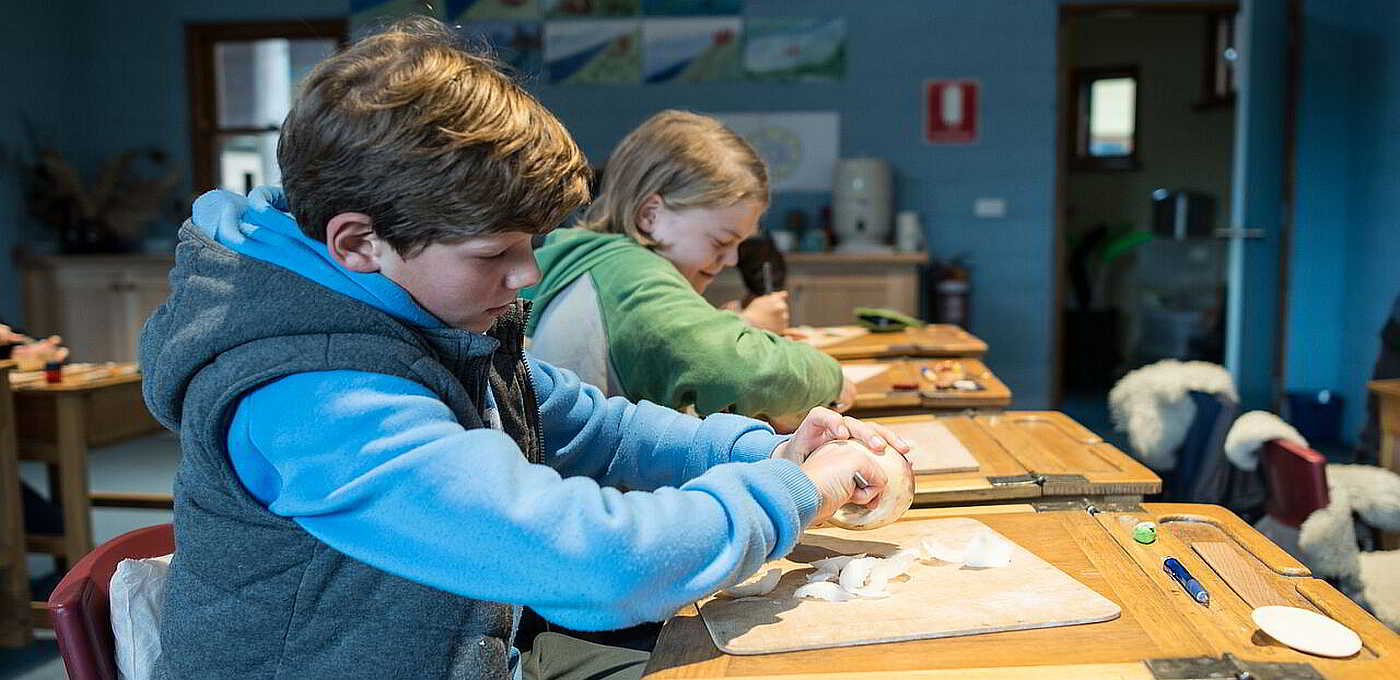The Seven Year Phases
Steiner’s educational theory is based on the seven-year phases of childhood development. 0-7 years is a period of rapid development where children master the skills of movement, speech, gesture, verbal and non-verbal communication. 0-7 years is a time where children live in imitation and a life of action.
7-14 years is a period of inward development where children’s feeling life comes alive with vivid imaginative capacities. These years are a time that children live strongly in a world of pictures, those they are presented with and those they form for themselves. During this time the faculty for more conscious and consecutive thought emerges but the pictorial world of the imagination remains the child’s most precious asset.
14-21 years is characterised by a wish to make one’s life one’s own and the development of critical thinking. The adolescent begins to discover him/herself in the world of ideas; ideas are to be enjoyed, explored, argued and absorbed. A personal search for truth emerges as does a new questioning. Young people at this time are looking for role models who hold up a mirror showing all that a human being can become and can achieve.
The Class Teacher
Generally, in Rudolf Steiner schools, a Class Teacher joins his/her class in Year 1 and remains with the class until Year 8. The teacher’s role is as educator, guide and protector. At Dandenong Ranges Steiner we take our classes to Year 6 from whence they graduate to a secondary school of their choice.
To be under the care of the same people year after year gives the students a feeling of having found a home on earth. In today’s modern world, where children’s lives are so full of superficial meetings, it makes it difficult to develop loyalties to other people, so this connection to the Class Teacher may be one of the most important experiences for the child. The class becomes a type of “family”.
As the children grow, so does the teacher. The journey the Class Teacher goes through leads to world knowledge and self knowledge.
As the Class Teacher approaches the end of this time s/he arranges her/his work such that her/his class have more specialist teachers included in the daily curriculum so that the students gradually become more independent.
Please click on the class teacher for further information on the role of the class teacher, curriculum and methodology at SEA.
Morning Circle
Morning Circle is a time when the class comes together to share in song and verses, balance and coordination games, beanbag and ball games, clapping games and skipping. Circle time supports the wider curriculum by using songs and poetry with the main lesson themes and integrating times tables practice with skipping games. This time at the beginning of the day allows the children to ground themselves, feeling centred, alert and ready to learn the new content of Main Lesson.
Main Lesson
The vehicle for the presentation of all Main Lesson work, and wherever possible all practical work as well, is ‘imagination’. The teacher strives to represent all intellectual work through imaginative pictures. These pictures are mobile and alive within the child, compared to their antithesis found in pre-formed concepts and isolated information, which are to be strenuously avoided. Art and artistic presentation thus become the teacher’s main tools.
In general, a three-day rhythm of presenting and completing work is used:
Day One: Experience through narration (thinking)
Day Two: Recollection, synopsis, illustration (feeling)
Day Three: Conclusion, activities relating to theme (willing) 
The curriculum is based on the major epochs of history, the folk wisdom of fairy tales, the human qualities of animal fables, the Celtic stories, the deeds of great people and their connection to nature, such as legends from the Old Testament, Norse, Ancient India, Egypt, Greece and Roman history and culture. Mathematics and science are also taught in the Main Lesson, as well as language and the humanities.
We encourage the children to present their work artistically and with care. Through this experience of intellectual and practical work, they can ‘live’ major historical periods and stages in human development.
Please click on main lesson for further information on the role of the class teacher, curriculum and methodology at SEA.
Practice Session
Main Lesson is followed by practice lessons or specialist subject lessons. It should be stressed that the skills taught in all subjects in the literacy and numeracy Main Lessons are subsequently worked into a program of regular practice and reinforcement in these practice lesson. This structure firmly supports good learning outcomes and our assessment approach that at any given point along the journey of learning, a child will be ‘on the way’ to acquiring these skills.
Priority is given in the morning to the more academic subjects and the afternoons are usually used for arts and crafts, outdoor activities, sport and practical work. Subjects such as music, eurythmy and foreign languages, which benefit from regular practice may be included in the morning circle and evenly spaced throughout the middle of the day whenever possible. Key learning areas are thus addressed throughout the whole day in every session of the integrated curriculum.
Our approach is to teach in such a way that all students in the class feel personally engaged, irrespective of whether the theme being studied belongs to the curriculum of the one year or the other. We work to ensure that children have the opportunity to achieve the desired learning outcomes by the completion of each stage.


